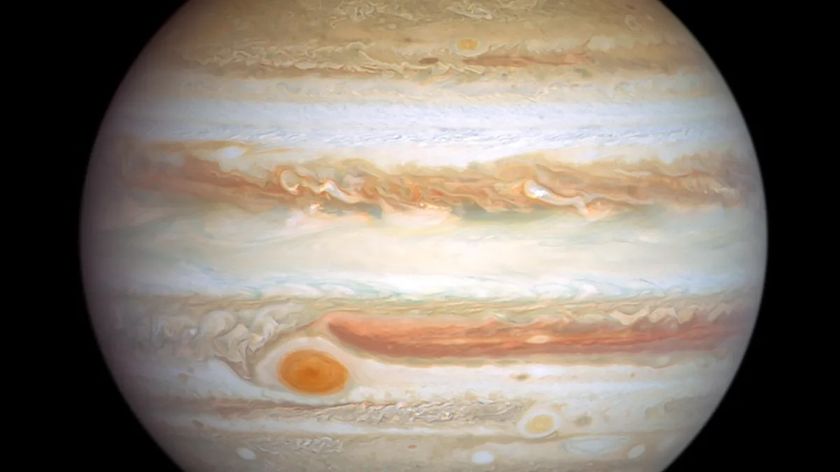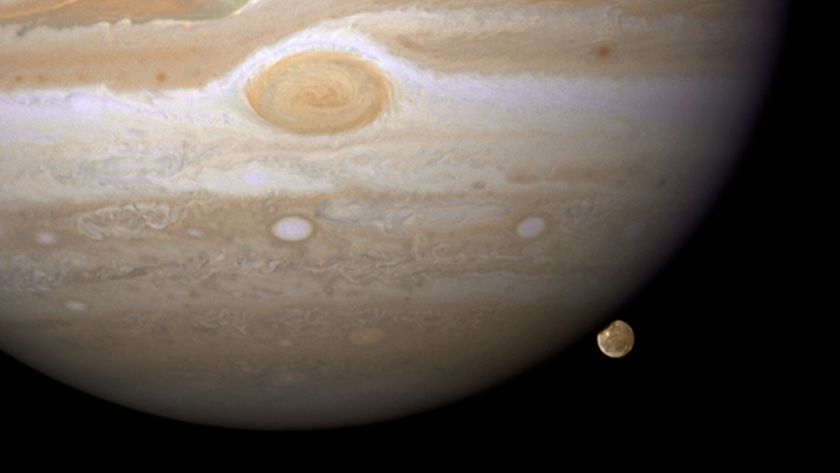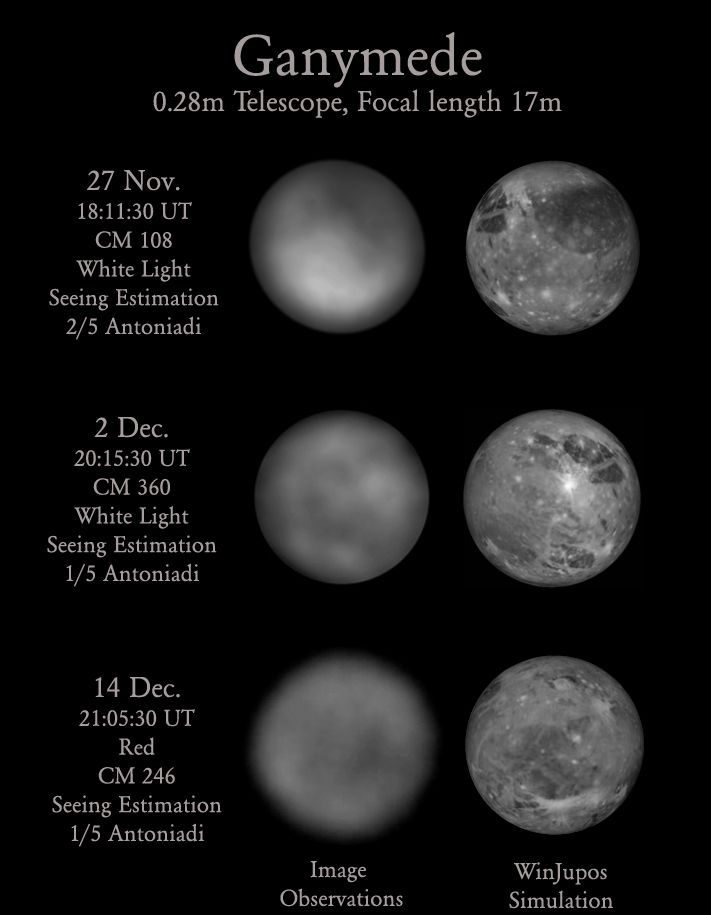
An amateur astronomer has created the first-ever homemade brightness map of Jupiter's huge moon Ganymede in a magnificent display of how non-professional skywatchers can contribute to the field of observational astronomy.
Greek skywatcher Emmanuel Kardasis of the Hellenic Amateur Astronomy Association created the new Ganymede map using a common "hobby" telescope and off-the-shelf camera and computer equipment. His map matches up well with images of Ganymede's surface taken by professionals, said officials with the European Planetary Science Congress (EPSC), which is meeting this week in Madrid.
For example, Kardasis' brightness (or albedo) map identifies such Ganymede features as Phrygia Sulcus, a system of grooves and ridges thousands of miles across, and a low-lying dark area called the Nicholson region.
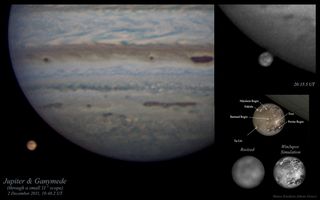
To create the images, Kardasis attached a camera to his telescope and recorded a video of the ice-covered Ganymede, which is the largest moon in the solar system at 3,273 miles (5,268 kilometers) across.
He picked the video's sharpest frames, then enhanced them using photo-editing software, EPSC officials said.
"Ganymede has a tiny disk as seen from Earth so was a good test for my techniques," Kardisis said in a statement. "If the same methods were applied to other worlds, perhaps [Jupiter's] volcanic moon Io, we could capture surface fluctuations. Professional observatories may create better images, but they cannot monitor our rapidly and ever-changing universe." The equipment amateurs need to generate products like his Ganymede map is relatively easy to find, Kardasis said.
"Creating useful images of planets requires a telescope with a diameter of at least eight inches. For tiny discs, such as the moons of Jupiter, bigger is definitely better," he said. "My Ganymede images were made using an 11-inch telescope. You also need a good motor drive on your tripod, a sensitive camera, some freely available software and lots of patience!"
Sign up for the Live Science daily newsletter now
Get the world’s most fascinating discoveries delivered straight to your inbox.
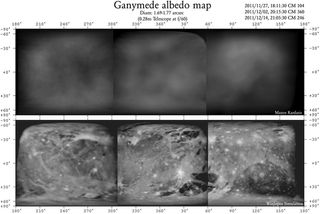
Kardasis' work highlights the valuable contributions amateurs can make to astronomy, EPSC officials said. For example, amateurs could monitor surface and atmospheric changes on planets such as Neptune and moons like Saturn's massive satellite Titan, complementing the more detailed (but much less frequent) observations made by professionals.
"I hope my work will inspire anyone interested in astronomy to use whatever equipment they have to make useful observations," Kardasis said.
Kardasis' work will be presented at the EPSC meeting in Madrid on Thursday (Sept. 27).
This story was provided by SPACE.com, a sister site to LiveScience. Follow SPACE.com on Twitter @Spacedotcom. We're also on Facebook & Google+.


